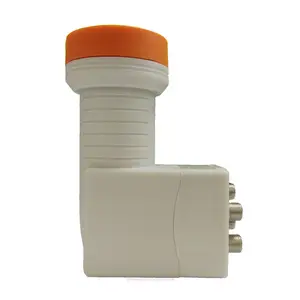(3656 products available)



































































































































































Ku band LNB stands for Low Noise Block Downconverter, a crucial component in satellite reception systems. It receives signals from the satellite, amplifies them, and downconverts them to a lower frequency for easier transmission to the receiver. These devices are commonly used in satellite dishes for broadcasting television signals, internet data, and other telecommunications services.
There are various types of ku band LNBs available in the market, including single, dual, and quad output LNBs. Single-output LNBs are suitable for individual users, while dual and quad-output LNBs are ideal for multiple connections or multi-room setups. Additionally, universal ku LNBs can receive both horizontal and vertical polarizations, offering flexibility in signal reception.
The technical specifications of c and ku band LNBs play a vital role in their performance. These include the noise figure, input frequency range, output frequency range, LO frequency stability, and conversion gain. C ku band LNBs with lower noise figures ensure clearer signal reception, while a wide input frequency range allows for compatibility with different satellite systems.
Recent advancements in c ku band LNBs have focused on improving signal quality and reliability. Manufacturers are incorporating weatherproof housing to protect the LNB from environmental factors, such as rain and sunlight. Additionally, compact designs and easy installation features make these LNBs user-friendly and efficient for various applications.
When selecting a ku band lnbf, consider factors such as the number of outputs required, compatibility with your satellite dish, and signal strength in your area. It's essential to choose an LNB from a reputable supplier to ensure quality performance and long-term reliability. Additionally, check for features like low power consumption and advanced technology for optimal signal reception.
In conclusion, ku band LNBs are essential components in satellite communication systems, offering reliable signal reception and transmission capabilities. By understanding the types, technical features, design innovations, and factors to consider when choosing an LNB, businesses can make informed decisions to enhance their satellite broadcasting services.